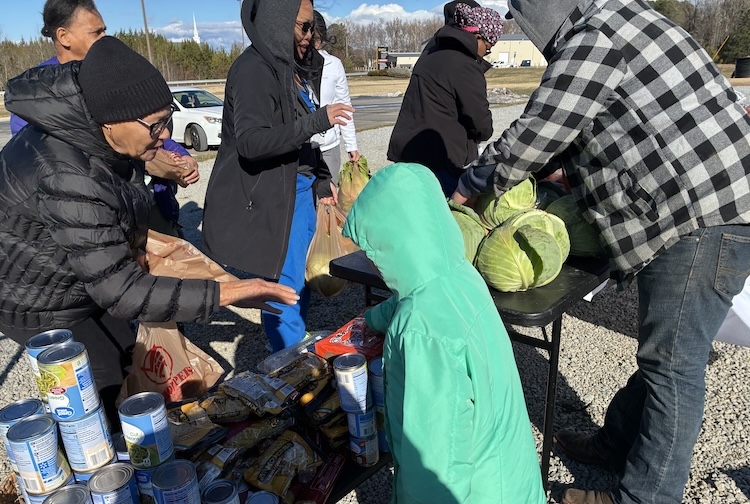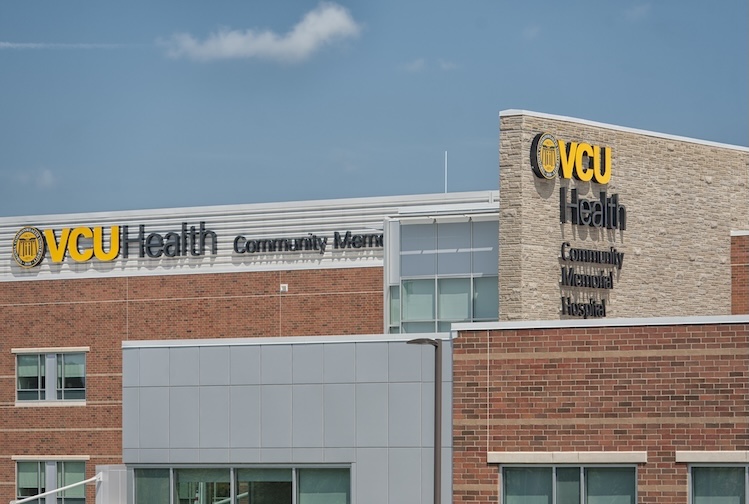Q/A: How clinical trials test vaccines
April 16, 2020
In March, a Seattle resident became the first in the United States to take an experimental dose of a potential vaccine for the novel coronavirus, COVID-19. Doctors injected 45 healthy people as part of a clinical trial they hope will protect people across the globe.
That same month, VCU began clinical trials for an experimental COVID-19 medication, just the start of many clinical efforts at VCU to address the pandemic. Every year, patients participate in hundreds of clinical trials led by VCU researchers and VCU Health providers with the support of the university's C. Kenneth and Dianne Wright Center for Clinical and Translational Research.
F. Gerard Moeller, M.D., the Wright Center's director and principal investigator, and Michael Donnenberg, M.D., an infectious disease specialist and senior associate dean for research and research training at the VCU School of Medicine, answer your questions on how clinical trials are used to develop vaccines.
How do vaccines work?
Moeller: The basic way a vaccine works is that it encourages your body to develop an immunity to a virus so that when you're exposed to it, your own immune system can fight it off.
When do researchers begin clinical trials?
Donnenberg: First, there are studies done to gauge safety. If the virus can affect animals, researchers can do studies in animals to show that the vaccine prevents infection. If the virus only infects people, you have to skip that step. Then hopefully, the next step is to find out if the vaccine is safe in people by giving healthy people a teeny bit of the vaccine. If they're all fine, you give more people a higher dose. That's a phase 1 trial.
The people getting the COVID-19 vaccine in Seattle are going to get two shots, a month apart, and they're supposed to journal and keep track of some vitals. Why do they have to do that?
Moeller: The researchers are interested in any side effects that might come up from the vaccine because there are side effects from all medications. Whether a medication gets approved by the Food and Drug Administration is this balance between risk and benefit. The level and severity of the side effects determine whether a medication should be approved for general use. It also depends on what the illness is. The FDA might accept pretty significant side effects if it cures cancer versus something that just reduces weight.
So a phase 1 preclinical trial gauges safety. What happens after that?
Donnenberg: The next stage is to randomize subjects to give the vaccine to or not give the vaccine to, and measure the antibody levels that they have afterwards. You're looking for an antibody level that is high enough to inactivate the virus and prevent infection.
What's after phase 2?
Donnenberg: The last thing is to do a big trial with an eye toward determining if the vaccine is effective at a certain level. For example, maybe we want to protect at least 75% of people. So how many people would we have to vaccinate compared to the placebo to see a significant difference? If the vaccine works, you'd have a lower infection rate in the experimental group than in the control group. But you want enough people in the trial that the difference would be statistically significant. That's phase 3.
Would you directly expose participants — healthy people injected with the vaccine — to the virus?
Moeller: No. What they would do is find a part of the U.S. where the infection rate is increasing and then vaccinate people in that area to see if the rate goes down. They would then compare that to a model of where the infection rate would have gone without the vaccine.
Donnenberg: If it were a mild infection, you could do that under controlled settings. But you can't do that with COVID-19. It's been done with some bacterial infections — cholera, for one, which sounds really dangerous. But if the investigators are there to monitor for signs and symptoms of cholera and treat it as soon they appear, it's actually safe.
Are there risks involved for the volunteers in terms of side effects?
Moeller: Yeah. Even placebos have side effects.
So is this why it could be a year to a year and a half before anything could be approved?
Moeller: We do have to be safe. There have been medications and treatments that came out that have had significant side effects or have even been fatal. You want to make sure that you're not doing more harm than good.
Donnenberg: None of this is easy. It requires large teams of people working together who have lots of different expertise, and it takes time to get the answers to each step. After gauging a medication's safety, it could take a couple of months of study to know whether we even have a hint that it might work. And each step is like that. It takes weeks to know whether it's working, and you can't go right to the last step. You have to do each one.
If people are interested in participating in clinical trials — either a treatment or a vaccine — what should they do?
Moeller: There are different ways people can find out about clinical trials. We post them on our Facebook page. We have a website called Research Match where individuals who are interested in clinical trials can go online and enter keywords like cancer or coronavirus. It will tell you all of the clinical trials that are going on near where that person lives.
Probably the most common way a person finds out about a clinical trial is from their doctor. So if you're seeing your doctor because of your diabetes, ask, “Do you know of any clinical studies going on for new treatments? I'd be interested in participating.”
How do researchers choose which volunteers to accept for a clinical trial?
Moeller: The research protocols have inclusion and exclusion criteria. Those are set up in advance to try to maximize the number of people that can participate, but it also keeps the study safe. So if you have a new medication and you don't know what effects it will have on elderly patients, you might limit the age to under 65. Or if you're worried about the medication's effect on someone who's pregnant, which is the case with most medications, you would limit it to people who are not pregnant.
Is it fair to say the many treatment and vaccine trials for COVID-19 have come to fruition very quickly in terms of the length of time it usually takes?
Moeller: Yes. They've had some expedited approval processes because the need is so urgent. They're willing to reduce some of the barriers that exist for clinical trials.
Have we seen this before? Did anything else trigger such a response?
Moeller: With the HIV epidemic, they did a similar thing with reducing barriers to increase clinical trials, increasing access to medications and clinical trials for people with HIV.
Donnenberg: The only other example I can recall is the response to the Ebola crisis in West Africa in 2014, which really accelerated the desire to get an Ebola vaccine. There had been labs working on it already because of small outbreaks, but once the outbreak was in the thousands, they ramped it up.
They did a lot of the classic phase 2 tests and phase 3 trials, where they vaccinated people who were exposed to somebody who was infected, but they couldn't deliver the vaccine to all places. So the control groups were simply a place that they couldn't get the vaccine to. It wasn't a perfectly designed scientific trial, but considering how many people were dying — death rates above 50% — the urgency was there. Just in case it worked, they wanted to be able to save lives.
There are lots of research groups out there pursuing COVID vaccines and treatments. How do you make sure you're all collaborating and nobody's duplicating efforts?
Moeller: With the coronavirus, a lot of it is being coordinated by the National Institutes of Health. Then some of it's being coordinated by the FDA, if it's a medication trial. Between those two, the FDA and the NIH, they really are coordinating efforts across the different institutions.
What else do you want people to know about this public health crisis? What questions have you been getting from your non-doctor friends?
Donnenberg: One is to appreciate just how dangerous the virus is and how it's killing people. It's killing people of all ages, too. Just because it kills elderly people at a higher rate doesn't mean it doesn't kill younger people, too.
Two is realizing just how contagious it is. It spreads very easily, and it spreads from people with minimal symptoms, maybe people with no symptoms. You don't have to feel sick to have lots of viruses in your saliva and nasal secretions.
And then the third thing is that the best way to stop it is social distancing. It's all about social distancing. That is actually the No. 1 thing.




